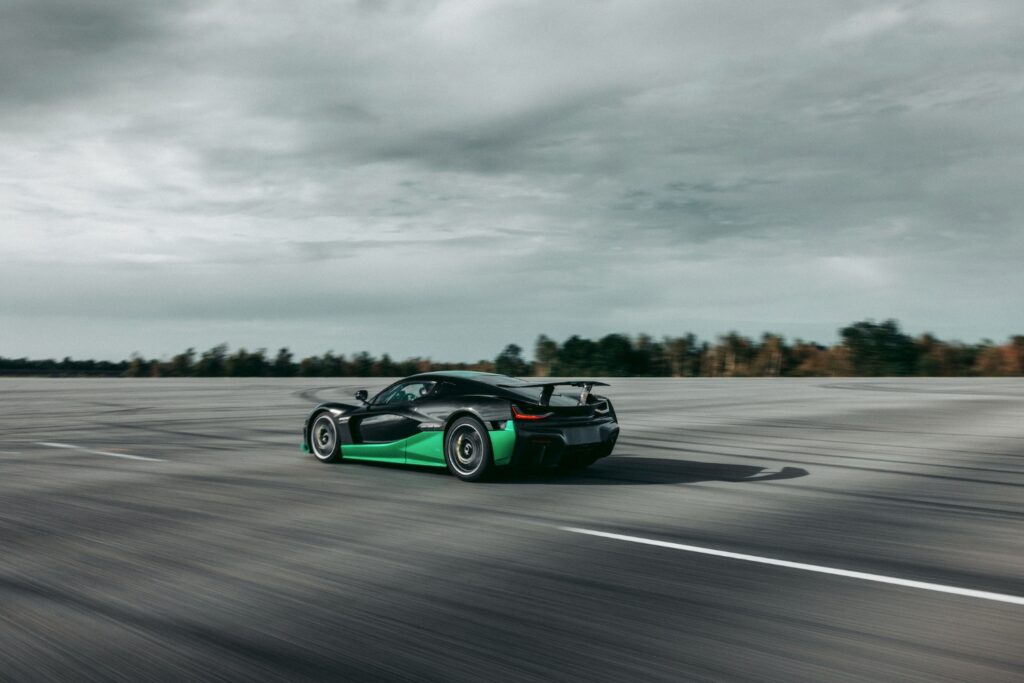After authentically pulverizing the Tesla Model S Plaid record at the Nürburgring, taking a whopping 20 seconds off the electric sedan’s mark from Elon Musk’s brand, and setting 23 new records in a single day (including 0-100 km/h in 1.81 seconds; 0-200 km/h in 4.42 seconds; and a new quarter-mile benchmark with a time of 8.25 seconds), the Rimac Nevera returned to the Papenburg test track in Germany to add another world record to its collection: it is now the fastest production car to drive… in reverse!
The Rimac electric supercar reached a speed of 275.74 km/h while driving in reverse, a record that the vast majority of cars cannot achieve while driving forward… The official house driver, Goran Drndak, did not have an easy time adapting to the particularly demanding conditions of the test, but recognizes that the result was absolutely incredible: “In the actual test, I definitely took some time to get used to it. You’re looking backwards, watching the landscape move away faster and faster, feeling your neck being pulled forward, almost the same sensation you would normally have during a hard braking. And you’re just focused on moving the steering wheel very delicately, carefully not to disturb the balance, watching the finish line and the braking point in the rearview mirror, while keeping an eye on the speed”, he explained.

Due to the absence of a conventional gearbox, the four motors can reverse polarity and achieve impressive speeds in any direction.

A lightning bolt with nearly 2000 hp
It is worth remembering that the Nevera’s total combined power reaches 1914 hp, while the torque reaches a stratospheric 2360 Nm, with all-wheel drive and torque vectoring system, with the transmission being handled by four fixed-ratio gearboxes, one per motor, each installed on each of the front and rear wheels. The system is associated with an “H”-shaped 120 kWh capacity battery, placed under the floor, capable of providing an estimated range of 547 km in the WLTP combined cycle.

This model, named after a Croatian word that describes extremely powerful and lightning-filled rapid-forming storms in the Mediterranean, has a limited production of only 150 units, each with a cost of around two million euros.







